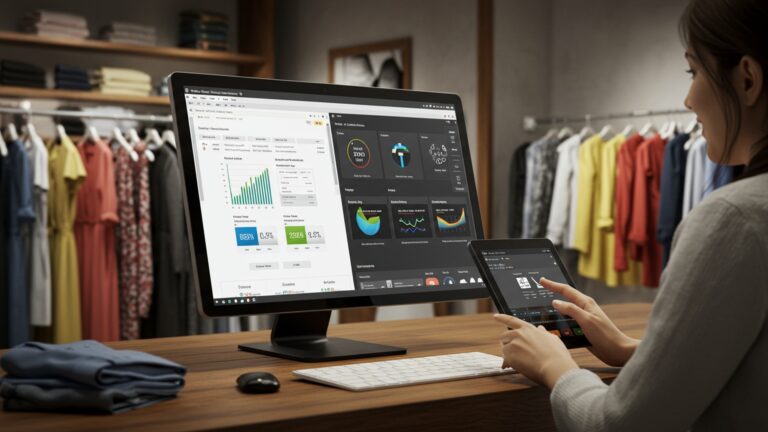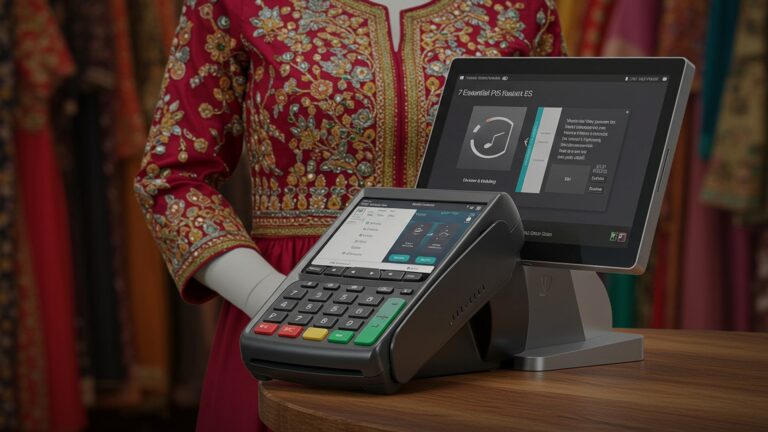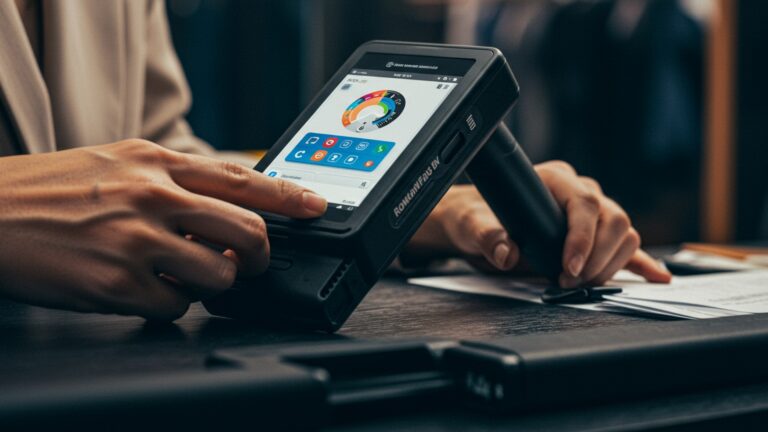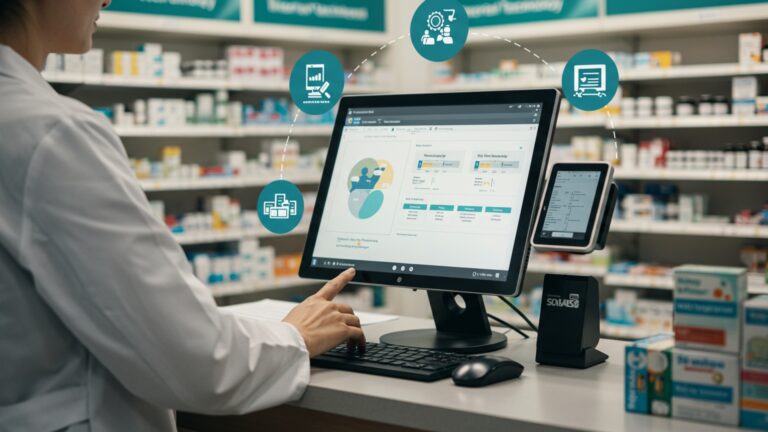Avoid These 6 Common Mistakes When Implementing New Restaurant POS Software Solutions
In today’s dynamic culinary landscape, where digital ordering, contactless payments. real-time inventory management are paramount, the strategic implementation of new Restaurant POS software is a critical operational undertaking, not merely a tech upgrade. Poor execution can transform a promising investment into a significant liability, disrupting service flow and eroding profitability. Forward-thinking restaurateurs interpret that leveraging advanced cloud-based systems for robust data analytics or seamless third-party delivery integrations demands meticulous foresight. Failing to address common errors often leads to overlooked training gaps, data migration issues, or inadequate hardware integration, ultimately hindering the very efficiency and enhanced customer experience a modern POS promises.

1. Skipping a Thorough Needs Assessment
One of the most critical errors businesses make when adopting new technology, especially a comprehensive system like Restaurant POS software, is failing to conduct a meticulous needs assessment. Many restaurant owners and managers are eager to upgrade but rush into selecting a system without truly understanding their unique operational requirements, workflows. pain points.
What does a comprehensive needs assessment entail? It’s an in-depth evaluation of every facet of your restaurant’s operations that the POS system will touch. This includes:
- Menu Management: How complex is your menu? Do you need extensive modifiers, combos, happy hour pricing, or daily specials capabilities?
- Inventory Management: What level of detail do you need for tracking ingredients, recipes. vendor management? Do you require real-time inventory updates?
- Table Management & Order Flow: Do you need graphical table layouts, split checks, order routing to different kitchen stations, or server performance tracking?
- Customer Relationship Management (CRM): Are loyalty programs, customer databases, or reservation integrations essential?
- Online Ordering & Delivery: Do you plan to integrate with third-party delivery platforms or offer proprietary online ordering?
- Reporting & Analytics: What specific data insights are crucial for your business decisions (e. g. , sales by item, labor costs, peak hours)?
- Hardware Compatibility: What existing hardware (printers, terminals) do you have. what new hardware will be required?
- Budget & Scalability: What is your budget. how will the system accommodate future growth or changes in your business model?
Actionable Takeaway: Before even looking at vendors, assemble a core team (owner, manager, head chef, key FOH staff) and create a detailed checklist of your current processes and desired functionalities. Speak to your staff about their daily challenges with the existing system (or manual processes). This internal audit will serve as your blueprint for evaluating potential Restaurant POS software solutions. For example, a fast-casual eatery prioritizing speed and order accuracy will have different top priorities than a fine-dining establishment focused on personalized service and complex reservation management.
2. Inadequate Staff Training
Even the most advanced and feature-rich Restaurant POS software is only as good as the people operating it. A common and detrimental mistake is underestimating the importance of thorough and ongoing staff training. Many establishments offer a quick, superficial run-through during implementation and expect staff to be proficient immediately.
Why is robust training crucial?
- Reduces Errors: Properly trained staff make fewer mistakes, leading to accurate orders, correct billing. less food waste.
- Increases Efficiency: Staff who are confident with the system can process orders faster, turn tables quicker. provide better service.
- Boosts Morale: When staff feel competent, they are less stressed and more engaged, leading to a more positive work environment.
- Maximizes ROI: You’ve invested significantly in new Restaurant POS software; comprehensive training ensures you get the most out of its capabilities.
Actionable Takeaway: Implement a multi-phase training program. Start with basic order entry and payment processing, then move to more advanced features like split checks, item modifiers, discounts, returns. end-of-day procedures. Consider creating a dedicated training environment or using “training mode” within the software so staff can practice without affecting live orders. Develop simple cheat sheets for quick reference. Designate a “POS Champion” among your staff who can answer questions and provide ongoing support. Following the implementation of a new cloud-based Restaurant POS software, one regional chain reported a 30% reduction in order errors and a 15% increase in average table turn time within the first month, attributing much of this success to their mandatory 3-day in-depth training program for all front-of-house staff, which included role-playing scenarios and a certification test.
3. Ignoring Data Migration and Integration
A significant oversight when implementing new Restaurant POS software is neglecting the strategic planning required for data migration and integration with other essential business systems. Many assume their existing data will magically transfer or that new software will seamlessly connect with everything else they use.
What is Data Migration? This refers to the process of transferring existing data from your old system (or spreadsheets) into your new POS. This can include menu items, pricing, inventory levels, customer databases, loyalty program points. employee records.
What are Integrations? These are the connections between your Restaurant POS software and other specialized systems that run your business. Common integrations include:
- Accounting Software: (e. g. , QuickBooks, Xero) for streamlined financial reporting, payroll. expense tracking.
- Online Ordering Platforms: (e. g. , DoorDash, Uber Eats, proprietary websites) to centralize orders and menu management.
- Inventory Management Systems: For advanced tracking, recipe costing. vendor ordering.
- Reservation Systems: (e. g. , OpenTable, Resy) to manage bookings and table assignments.
- Loyalty Programs: To track customer points and rewards.
- Employee Scheduling & Payroll: To manage shifts and calculate wages accurately.
Actionable Takeaway: Before committing to a new Restaurant POS software, thoroughly discuss data migration capabilities and integration options with potential vendors. Ask about their API (Application Programming Interface) and what existing integrations they support. Plan your data migration well in advance, cleaning up old data to avoid transferring inaccuracies. For instance, if you rely heavily on DoorDash, ensuring your new POS integrates directly can save countless hours of manual order entry, reduce errors. provide a unified sales report. Always test integrations thoroughly in a non-live environment before going live.
4. Underestimating Hardware Requirements and Network Infrastructure
While the software itself is crucial, many businesses make the mistake of focusing solely on the digital aspects and overlooking the physical backbone: the hardware and network infrastructure. A powerful Restaurant POS software solution can be severely hampered by inadequate or unreliable physical components.
Key Hardware Considerations:
- POS Terminals: Are they robust, waterproof. easy to clean? Do you need fixed stations or mobile tablets for tableside ordering?
- Printers: Do you need kitchen printers (impact printers for durability) and receipt printers (thermal for speed)? What about label printers for takeout?
- Payment Processors/Card Readers: Are they EMV compliant, NFC-enabled for tap-to-pay. secure?
- Cash Drawers: Reliable and secure.
- Kitchen Display Systems (KDS): Can streamline kitchen operations by displaying orders digitally, reducing paper waste and improving communication.
Network Infrastructure:
This is often the silent killer of efficient POS operations. A slow or unstable internet connection can bring your entire restaurant to a standstill, leading to frustrated customers and lost sales. Consider:
- Reliable Internet Service Provider (ISP): Invest in business-grade internet with sufficient bandwidth.
- Wired vs. Wireless: While Wi-Fi offers flexibility, wired Ethernet connections are generally more stable and secure for critical POS terminals and kitchen displays.
- Network Security: Protect customer data and your business with robust firewalls and secure Wi-Fi protocols.
- Redundancy: Consider a backup internet connection (e. g. , a cellular failover) in case your primary internet goes down.
Actionable Takeaway: Conduct a thorough assessment of your current hardware and network. Are your Wi-Fi access points strategically placed for optimal coverage? Are your cables up to date? Invest in durable, restaurant-grade hardware that can withstand the demanding environment of a busy kitchen or dining room. For example, a mid-sized restaurant in a bustling urban area recently faced frequent transaction failures and slow order processing during peak hours. An audit revealed their consumer-grade Wi-Fi router was overwhelmed. their old thermal printers were constantly jamming. Upgrading to a business-grade network infrastructure with wired connections for stationary terminals and robust kitchen printers significantly improved their operational efficiency and customer satisfaction, demonstrating that even excellent Restaurant POS software needs a solid foundation.
5. Neglecting Post-Implementation Support and Updates
Many businesses view the implementation of new Restaurant POS software as a one-time project. Once the system is live, they consider the job done. This oversight can lead to significant problems down the line, as software, like any technology, requires ongoing support, maintenance. updates to remain effective, secure. current.
Why is ongoing support critical?
- Troubleshooting: Issues will inevitably arise, from user errors to unexpected software glitches. Prompt support is essential to minimize downtime.
- Security Patches: Software vulnerabilities are constantly discovered. Regular updates provide crucial security patches to protect your data and prevent breaches.
- Feature Enhancements: Reputable POS vendors continually release updates with new features, improvements. optimizations that can further enhance your operations.
- Compliance: Payment processing regulations (e. g. , PCI DSS) and tax laws can change, requiring software updates to maintain compliance.
Actionable Takeaway: Before finalizing your Restaurant POS software choice, thoroughly investigate the vendor’s support structure. Ask about their Service Level Agreement (SLA), available support channels (phone, email, chat, knowledge base). typical response times. comprehend their update policy – are updates automatic, or do they require manual intervention? Are there additional costs for premium support or major feature releases? Designate an internal team member to stay informed about updates and communicate new features or changes to the rest of the staff. Opting for a vendor with robust 24/7 support, even if it comes at a slightly higher monthly fee, can be invaluable during a busy Saturday night when a critical issue arises. A comparison of typical support models might look like this:
| Support Tier | Features | Ideal For |
|---|---|---|
| Basic/Standard | Email support, knowledge base, business hours phone support. | Small cafes, low-volume operations with simple needs. |
| Premium/Pro | 24/7 phone/chat support, dedicated account manager, faster response times, priority bug fixes. | Medium to large restaurants, multi-location businesses, high-volume operations. |
| Enterprise | All Premium features plus custom development, on-site support options, strategic consulting. | Large chains, complex enterprises with highly specific needs. |
6. Failing to Customize and Optimize
Many restaurants invest in powerful Restaurant POS software but then use it in its most basic, out-of-the-box configuration. This is akin to buying a high-performance sports car and only driving it in first gear. Modern POS systems offer a wealth of customization options and advanced features that, when properly utilized, can significantly streamline operations, enhance customer experience. boost profitability.
What does customization and optimization entail?
- Menu Layout & Modifiers: Tailoring your menu interface for quick ordering, logically grouping items. setting up intelligent modifiers (e. g. , “add extra cheese,” “no onions”) to reduce order errors.
- Workflow Automation: Setting up automated routing for orders to specific kitchen stations, integrating prep times. managing inventory alerts.
- Reporting Dashboards: Customizing your reporting dashboards to display the key performance indicators (KPIs) most relevant to your business at a glance (e. g. , daily sales, labor costs as a percentage of sales, top-selling items).
- Loyalty Programs & Promotions: Leveraging built-in CRM tools to create and manage customer loyalty programs, discounts. promotional offers.
- Employee Permissions: Setting precise access levels for different staff roles to ensure data security and prevent unauthorized actions.
- Hardware Configuration: Optimizing how your hardware communicates, such as setting up specific printers for specific order types.
Actionable Takeaway: After initial implementation, dedicate time to explore all the features and customization options your Restaurant POS software offers. Work closely with your vendor’s support or implementation team to tailor the system to your specific operational flows. Gather feedback from your staff on what could be improved or made more efficient within the POS. For example, a regional pub chain initially used their new Restaurant POS software for basic transactions. After a quarter, they decided to dive deeper. They customized their menu screens to reflect their most popular daily specials prominently, integrated their loyalty program directly into the POS for seamless points accumulation. configured detailed labor cost reporting. This optimization allowed them to identify peak staffing needs more accurately and increased customer loyalty program sign-ups by 25%, demonstrating the profound impact of moving beyond basic functionality and truly making the Restaurant POS software work for their business.
Conclusion
Implementing a new POS system is more than just installing software; it’s a strategic investment in your restaurant’s future. From my own observations in the industry, the biggest pitfalls often stem from a lack of foresight regarding staff training and underestimating the intricacies of data migration. For instance, expecting your team to instantly master a complex new interface without dedicated, hands-on sessions is a recipe for operational chaos, as I’ve seen firsthand in busy weekend services. Instead, approach this transition with a proactive mindset. Prioritize choosing a cloud-based solution that offers seamless integrations, reflecting current trends in unified restaurant management. Engage your team early in the process, making them feel like part of the solution rather than victims of change. By meticulously planning for thorough training, ensuring robust data integrity. selecting a system designed for scalability, you won’t just avoid common mistakes; you’ll unlock unprecedented efficiency. Embrace this opportunity to refine your operations and propel your business towards a more connected and profitable future.
More Articles
How to Choose the Best Restaurant POS Software for Your Business
5 Key Questions to Ask Before Buying Restaurant POS Software
How to Identify the Best Restaurant POS System Features for Success
Unlock 8 Practical Strategies to Maximize Your Restaurant POS Software
Discover 7 Powerful Ways Restaurant POS Software Boosts Your Business
FAQs
Why is thorough staff training so crucial when rolling out new POS software?
Skipping proper training is a huge pitfall! Your staff are the ones using it daily. Without adequate training, they’ll be slower, make more mistakes, get frustrated. ultimately provide a worse customer experience. Invest in comprehensive training for all roles – front-of-house, back-of-house, managers – to ensure smooth operations from day one.
What’s the best way to make sure I’m picking the right POS system for my restaurant’s unique needs?
Don’t just go for the most popular or cheapest option. A common mistake is not clearly defining your specific needs first. Think about your restaurant type (fine dining, quick-service, bar), menu complexity, inventory management, online ordering. reporting needs. Get demos, ask tough questions. ensure the system genuinely fits your operational flow and future growth.
Should I really test the new POS system extensively before we go live?
Absolutely! Rushing the go-live without thorough testing is a recipe for disaster. Simulate real-world scenarios: peak hour orders, split checks, returns, different payment types. even system crashes. Test every function repeatedly. This helps identify bugs or workflow issues before they impact your customers and staff during service.
Is transferring our old menu items, pricing. customer data usually a big hassle with new software?
It can be if you don’t plan for it! A common mistake is underestimating the complexity of data migration. Carefully map out how your old data will transfer to the new system. This includes menu items, modifiers, pricing, discounts, loyalty programs. customer databases. Incorrect data can cause major headaches, so dedicate time to ensure accuracy.
Do I actually need a detailed plan for implementing the new POS, or can we just figure it out as we go?
You definitely need a detailed plan! Winging it is a major mistake. Create a clear roadmap with timelines, assigned responsibilities. specific milestones for each stage: software selection, hardware setup, data migration, training. go-live. A structured approach minimizes disruption, reduces stress. keeps everyone on the same page.
What about ongoing support after the POS is installed? Is that something I should worry about?
Yes, absolutely! Another mistake is ignoring post-implementation support. Things will inevitably pop up – questions, minor glitches, or updates. Ensure your chosen POS provider offers reliable, accessible technical support. interpret their response times and what’s included in your service agreement. You don’t want to be left stranded when you need help most.
My team isn’t really tech-savvy; should I still get them involved in the new POS decision-making?
Even if they’re not tech experts, involving your front-line staff and managers in the process is crucial. Their input on daily workflows, pain points with the old system. feature wish lists is invaluable for choosing a user-friendly and efficient solution. Plus, involving them early fosters buy-in and makes the transition much smoother, preventing resistance later on.





